Motorola MB8600 is the latest device from the new-generation of cable modems to join the DOCSIS 3.1 group (along with Arris SB8200 and Netgear CM1000) and, besides featuring up to 32 SCQAM (DOCSIS 3.0) or two OFDM (DOCSIS 3.1) bonded channels which should allow you to take advantage of the best and fastest Internet speed available from your service provider, it also brings some unique elements to the table, such as the four Gigabit Ethernet ports (which, similarly to Arris SB8200 can be used, in the future, for link aggregation) and the Active Queue Management (AQM), which has the role of keeping the latency low.
| Motorola MB8600 | |
|---|---|
| Amazon.com | Check Offer |
Although it uses the Motorola name, the MB8600 was, in fact, manufactured by Zoom, which is a highly-regarded networking company on is own, but the Motorola name seems to attract lots of customers since it is a more trusted brand.
It’s interesting to see that Zoom decided not to include its own brand name and keep the modem simply as Motorola (it can only use it for 5 years), while Arris created an association between its own modem line and the Motorola name (e.g. Motorola ARRIS SURFboard SB6183). Even so, Zoom has created solid cable modems over the years (and it steered clear of the Puma 6 incident), so let’s see how does the Motorola MB8600 perform.
UPDATE 04.14.2018: The Motorola MB8600 with the firmware code version 8600-6.1.1.19 has added back the Spectrum Analyzer and it now supports LAG features (Link Aggregation Group) – special thanks to Jacki for pointing it out.
Design
If you are familiar with the Motorola Arris cable modem line, know that Zoom’s Motorola modems are completely different looking devices (it only kept the logo and, maybe, the colourful rear side) and it seems that the manufacturer has also distanced itself from the previous Zoom cable modems by adopting an entirely new design. So, the MB8600 features a robust elliptic-cylindrical plastic case, with soft rounded corners (obviously) and, while the main body is covered by a grey matte finish, there is a narrower top and a thicker bottom section (that is really a built-in stand) that are covered by a glossy black finish.
The right, left and top side of the MB8600 are generously covered by lots of cut-outs to ensure a proper airflow. This is an important step to keep the device cool (thus ensuring its longevity) and through the lateral vent holes, you can actually see the internal circuits (so it’s clear that Zoom did not leave any unused internal space).
If you’re accustomed with the palm-sized Arris modems, know that the MB8600 is a larger device (measures 7.0 x 7.2 x 2.2 inches) and reasonably heavy to ensure a proper stability (it weighs 18.4 ounces, which is still more than what the Netgear CM1000 weighs). The device can only be positioned on a desk or any flat surface, lacking any wall-mounting capabilities (it’s true that Arris SB8200 can be mounted on a wall, but it’s not really an advantage because it covers a significant amount of ventilation holes, therefore making it run hotter).
Motorola MB8600 is not really a cheerful device, but, along with the CM1000, it is a more elegant cable modem and this is enhanced by the front glossy section, on which reside five LED lights, with the role of showing the status of the Power (green means the device is powered on), Downstream (if the LED is blinking a green colour, then, the modem is scanning for a downstream channel, while, if it is solid green, then it is connected to a channel; if the LED is blinking blue, then the modem is negotiating bonded channels and, if it is solid blue, then, it is connected to two or more channels), Upstream (similarly to the Downstream LED, but for upstream channels), Online (solid green signifies a DOCSIS 3.0 connection, while solid blue means a DOCSIS 3.1 connection), LAN (blinking means activity, solid green signifies that the Ethernet ports are linked but not bonded and, lastly, solid blue shows that the ports are linked and bonded). The LEDs do not bright up the room at night.
Turn the cable modem around and you are greeted by lots of ports and buttons (each with its own uniquely coloured section): at the top, there’s the Reset button and underneath it, there are the four Gigabit Ethernet ports (each LAN port has its own LED lights: blinking means activity, solid green signifies a 1Gbps connection and a solid amber LED shows a 10 or 100 Mbps connection), the COAXial RF connector (with surge protection), the ON/OFF button and the Power port.
Similarly to Arris SB8200 (which had two Ethernet ports), the MB8600 has four ports, but with only one usable at the moment but most users will only use one, since the maximum available speed is 1Gbps from the ISPs across the country. So, why the four ports, you may ask? Well, for a couple of reasons. The first is to use multiple IP addresses, but, be aware that this is an available option only for business owners and not for the usual home user. Secondly, when higher than 1Gbps speeds do become available, since the standard right now is one Gigabit LAN port, you may need to use two or more ports combined to reach a higher throughput. At the moment, the MB8600 has enabled the support for LAG (as LACP, from what I’ve noticed), but, as I said before, you do need to wait for the service providers to add 2Gbps+ Internet data plans to their available offers.
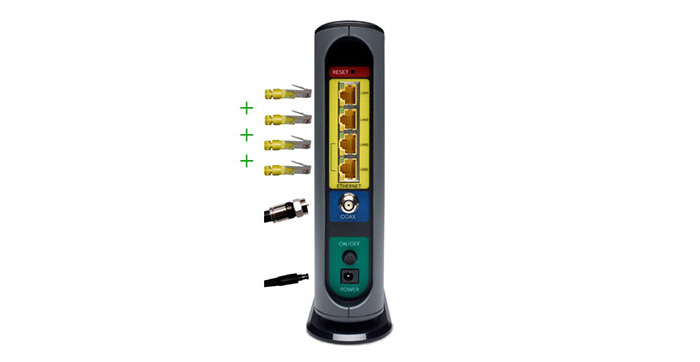
You also need to understand that even if there are high-end routers out there which support LAN link aggregation (such as the Asus RT-AC88U or the newer TP-Link Archer C2300), which is useful for connecting to a NAS, you need routers that support WAN port bonding (link aggregation) in order to take advantage of higher Internet speeds.
Hardware
Inside the case, Zoom has equipped the Motorola MB8600 with a Broadcom BCM3390ZRKFSBG chipset (2 X FPE G48506MN LAN transformers), 512 MB of RAM (Nanya NT5CC128M16IP-DI) and 128 MB of NAND storage memory (Micron). The MB8600 is able to handle up to 32 SCQAM downstream download channels and 8 upstream bonded channels using DOCSIS 3.0 and 2 OFDM download and upload bonded channels using DOCSIS 3.1.
It’s good to see that the new generation of DOCSIS 3.1 cable modems decided to steer clear of the Intel Puma chipsets and it’s interesting that Zoom did released a modem with an Intel Puma chip a long time ago (the first 5341) and immediately released another version with a Broadcom chip instead (a unique incident on Zoom’s cable modem history). So, while both Arris and Netgear got caught up in the latency bug mess, Zoom kept its record reasonably clean.
Compatibility and Performance
Similarly to the Arris SB8200 and Netgear CM1000, Motorola MB8600 suffers from a lack of support from the large majority of the cable providers, but this will slowly change in the next months when DOCSIS 3.1 becomes widespread and speeds at and beyond 1Gbps become more common. At the moment, the MB8600 is compatible with Comcast XFinity, Cox and Grande Communications, while W.O.W. and Charter should add it to their list of approved modems in a short period of time (hopefully).
Even so, before purchasing any modem, you should first check with your ISP to make sure it is supported or if you can actually take advantage of any 1Gbps data plans in your region and that’s even more necessary especially when dealing with devices that use new technologies and have some novelty features implemented.
Another issue to take into consideration is the high price tag of the newer DOCSIS 3.1 modems and if it wouldn’t be wise to rent the device instead of buying it and suffer a short-term financial shock. The advantage of purchasing your own cable modem is that you will recover your investment in less than a couple of years and, since the MB8600 is a future-proof device, it will stick around for years to come. At the same time, IPSs won’t take kindly this decision and, you will receive firmware updates slower and your cable modem will be the first to be blamed in case of any connection problems, but, the disadvantage would be that you will have to pay a relatively high monthly rent sum and the device won’t truly be yours.
The maximum theoretical speed you can get from the Motorola MB8600 is simply 1Gbps (which is the maximum for the Ethernet LAN port), so, if you live in an area where this type of data plan is available, you will see an average speed of 950Mbps. In reality, the maximum theoretical speed can be 3.8 Gbps (without taking into consideration the network overhead), but, to even get close to this type of performance, the MB8600 must wait for a while until Gigabit+ speeds become available, the ISPs allow link aggregation on all ports and until consumer-type routers will be able to receive everything the cable modem sends its way (at least a dual-WAN router which supports link aggregation). But this may take a while and, in the meantime, I just hope Gigabit data plans become the norm in a short period of time (Gigabit Internet data plans have gotten more widespread since last year, when the MB8600 was released).
The Motorola MB8600 is simply a cable modem and, in order to connect your wired or wireless clients, you need a separate switch and/or a wireless router (just be aware that you may need a more powerful device, so it won’t be the bottleneck of your network).
Note: Even if you are still limited to DOCSIS 3.0 and don’t have access to Gigabit speeds, the MB8600 will prove to be useful if you live in an area with congested nodes (since it uses more channels).
Setup
The setup process of the Motorola MB8600 is similar to any other cable modem out there: you either activate the device manually or by calling your ISP. To do it manually, plug a cable from the modem to a computer and open a web browser, which will automatically launch the activation wizard (for example, in the case of Comcast XFinity, if the page does not appear, navigate to https://www.xfinity.com/internetsetup). From here on, you need to follow the on-screen instructions (you need to have the Comcast Account Number and the phone number connected to the account available) and, once the process is finished, check if you are connected to the Internet by opening any web page.
To access the modem’s interface, you need to go to 192.168.100.1 and, similarly to Arris SB8200, the MB8600 features a built-in Spectrum Analyzer that can be accessed by going to 192.168.100.1:8080. While when it was released, the MB8600 had a Spectrum Analyzer that could be accessed by the user (similarly to Arris SB8200), it seems that this feature has been removed and it’s no longer available with the latest firmware update This feature was removed at some point last year, but it seems that Motorola/Zoom decided to add it back to the feature list (the Spectrum Analyzer is useful for viewing the status of the radio frequency and for identifying, on the fly, any modem problems or anomalies that have occurred).
Conclusion
Right now, the Motorola MB8600 does not have any performance advantage over the CM1000 or the SB8200 and this will remain true until the cable providers start giving its users access to higher-than-Gigabit speeds. When this happens, the users of the MB8600 will be able to take advantage of top Internet speeds using link aggregation. And that’s pretty much the main selling point of any cable modem of this kind, the future-proofing. That being said, the MB8600 will handle a Gigabit data plan without problems, offers a Spectrum Analyzer, a well-ventilated case and more channels for crowded nodes, so it’s worth it even before we’ll be able to use Gigabit+ speeds.
Check the product here:

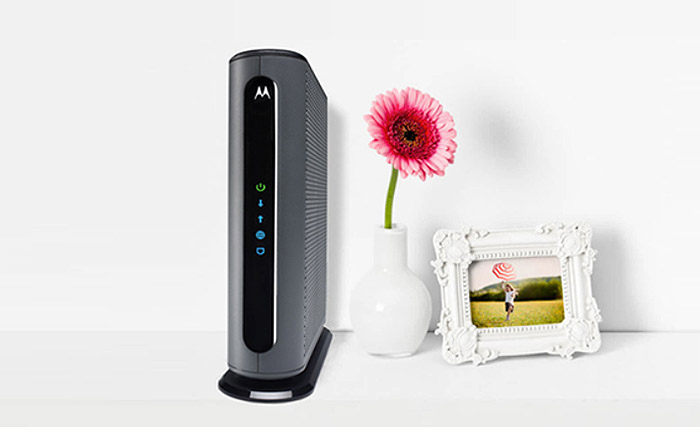
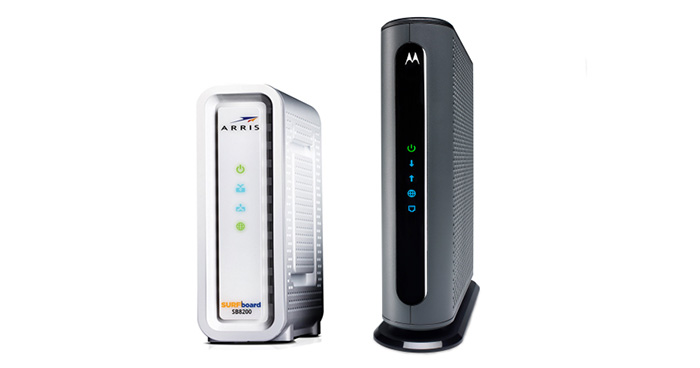
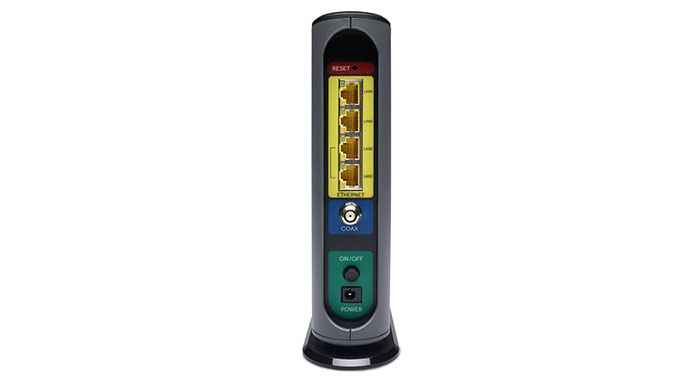
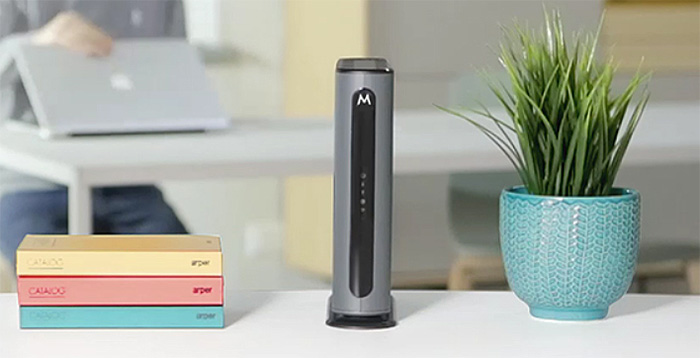
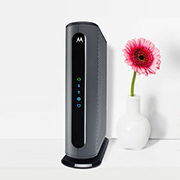
I purchased a Motorola SB8600 today 01-13-2019 and was disappointed to see that the new modem had Only one Ethernet port on the rear. The serial number is 2988-MB8600-0945. I will be contacting both amazon & Motorola.
I’m not 100% about your specific model but the MB8600 should have four Ethernet ports – the manufacturer decided to cover three of them to avoid confusion.
This link can help you remove that cover: https://motorolamentor.zendesk.com/hc/en-us/articles/115004178154-FAQ-There-is-only-one-Ethernet-port-on-the-back-of-my-MB8600-I-want-to-use-port-bonding-How-do-I-access-the-three-other-ports-
(I’m not sure why but this from Tech Support)
I apologize, the Spectrum Analyzer feature has been disabled.
Regards,
Technical Support Services
Motorola Cable LLC
1-800-753-0797
M-F 8:30 AM – 10:00 PM ET
Yes, it seems that Zoom disabled it and not Comcast (or any other ISP). I am still waiting for a more detailed response from them (with the reason why they disabled the Spectrum Analyzer and Arris did not). In the meantime, I will update the article, so others won’t think that something is wrong with their devices. Thank you for looking into this matter, MBZ.
As an update, I spoke with Zoom’s representatives and they said there is a high chance they may re-enable the Spectrum Analyzer in the next firmware release.
The MB8600 does not have the Spectrum Analyzer – the Arris does thus explaining my and KEH’s problem!
The MB8600 certainly had it a few months ago, perhaps it was disabled by the manufacturer. Let’s wait and see what Zoom has to say about it (I don’t have the device anymore, so I can’t test it with the latest firmware) and Comcast has already stated that they’re not at fault.
and why would, as you said, Motorola use that address if Comcast was blocking :8080?
I’ll try to get in touch with both Zoom and Comcast representatives and see what’s going on. The moment I get an answer I will let you know in the comments section.
Comcast says they do not block any port.
Neither Can I. Not with Safari not with Chrome. Anyone have suggestions?
There is a chance that the port is closed by the IPS since some malware used the port 8080, so the Spectrum Analyzer is completely blocked to fix that possible vulnerability.
Just got this. Its great and while it costs more upgrading every 2-3 years as speeds goes up costs the same. Pretty sure I can see things like better page loads already. I will not I can not access the Spectrum Analyzer at 192.168.100.1:8080 maybe Comcast turns that off ?